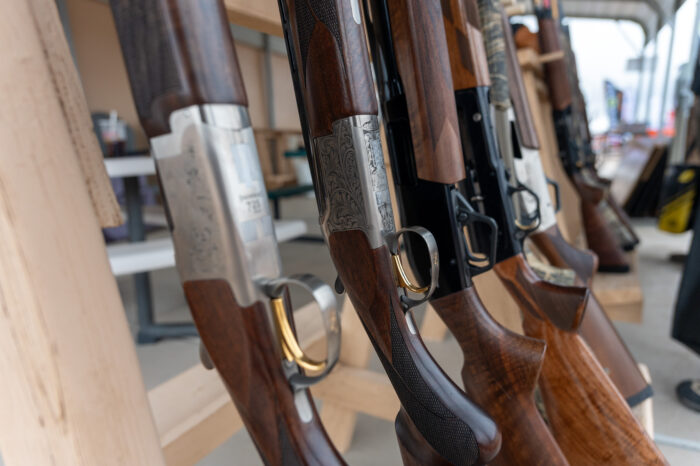A good shotgun is a long-term investment. I’ve personally been carrying one shotgun in my lineup, a Remington 1100 Special Field, since the early 1990s, and it’s still going strong with minimal maintenance.
So when you decide to close the deal, you’re cementing a relationship with a tool that you may have for the rest of your life and pass on to your children. No pressure!
Fortunately, shotguns also hold their value fairly well, so trading them out won’t usually break your wallet. But you want to make an informed decision when getting a new shotgun, so our hunting team put our years of collective shooting experience together for some recommendations to help guide your purchase. (And it’s worth mentioning that this article focuses on shotguns you can buy new today.)
A note on specs and product scores: with so many of these shotguns having different variations, all specs are for the most basic 12-gauge model, unless otherwise noted. For many of these guns, there are models suited for specific needs that will have different specs. However, the specs of a standard 12-gauge will give you a relative comparison. And some of these non-12’s are too good not to share.
Likewise, the application rankings in this guide are based on the standard model. Specific models would change our scores.
I’ll jump right into my favorite shotguns now. But if you want more guidance, hop down to the end of the article, where I discuss the intricacies of shotguns so that you can make an informed purchase.
Editor’s Note: GearJunkie updated this guide on August 29, 2025, by adding product scores, updated specs, expanded reviews, and a more in-depth buyers’ guide section. We also added the ATA Arms Neo X Max-7 as “The Best Deal in Shotguns.”
The Semi-Auto to Rule Them All
-
Ultra-reliable intertia system -
B.E.S.T. version backed by 25 year warranty -
Turkey model available -
Numerous colors available
A Budget Semi-Auto to Rule Them All
-
Value (performance to price) -
Numerous variations available -
Reliability -
Omni stock adjustable fit
-
Some complain about recoil
The Best Deal in Shotguns
-
Light -
Reliable inertia-driven semi-auto -
Change chokes with no tools -
Points and swings intuitively
-
Lacks fine finish of higher price shotguns
Editor Sean McCoy’s Favorite Upland Gun
-
Aesthetics -
Weight -
Mechanical trigger -
Flat out shoots
-
12 Gauge no longer in production -
Price
Editor Sean McCoy’s Other Favorite Upland Gun
-
Available in a 12 gauge -
Aesthetics -
Low profile -
Sporting version has an adjustable stock
Editor Rachelle Schrute’s Favorite Shotgun
-
Application specific models -
Price -
Time tested -
Widespread availability
-
Not as high quality of a finish -
Prone to rust -
Not as smooth as high end shotguns
Editor Rachelle Schrute’s Other Favorite Shotgun
-
It’s a 16 Gauge -
Holds value -
Humpback design
Budget Over/Under
-
A break-action at a great price -
Lefty (Southpaw) version available -
Comes with five chokes -
Selectable trigger
-
Extractor operation -
Not as nice of a finish as high end over unders
Unique Autoloading Pump
-
Inertia-assisted pump makes cycling easy -
Endless variations for application specific hunters -
Great point-ability -
Smaller sizes are lightweight -
Price
-
Heavy trigger pull (7lbs. 11.5 oz)
A Pretty Autoloader
-
Aesthetics -
Different finishes for different applications -
Swings well -
Weight
-
Price -
Some (not us) complain about kick
Buyers Guide: How to Choose the Best Shotgun
While I’ve tried to lay out some top options above, there are literally thousands of very good shotguns you could buy, dating back to the early 20th century. So chances are very good that you’re going to consider buying one that’s not on the list above.
What do you need to know to buy the best shotgun for you? Let’s break it down.
Gauge
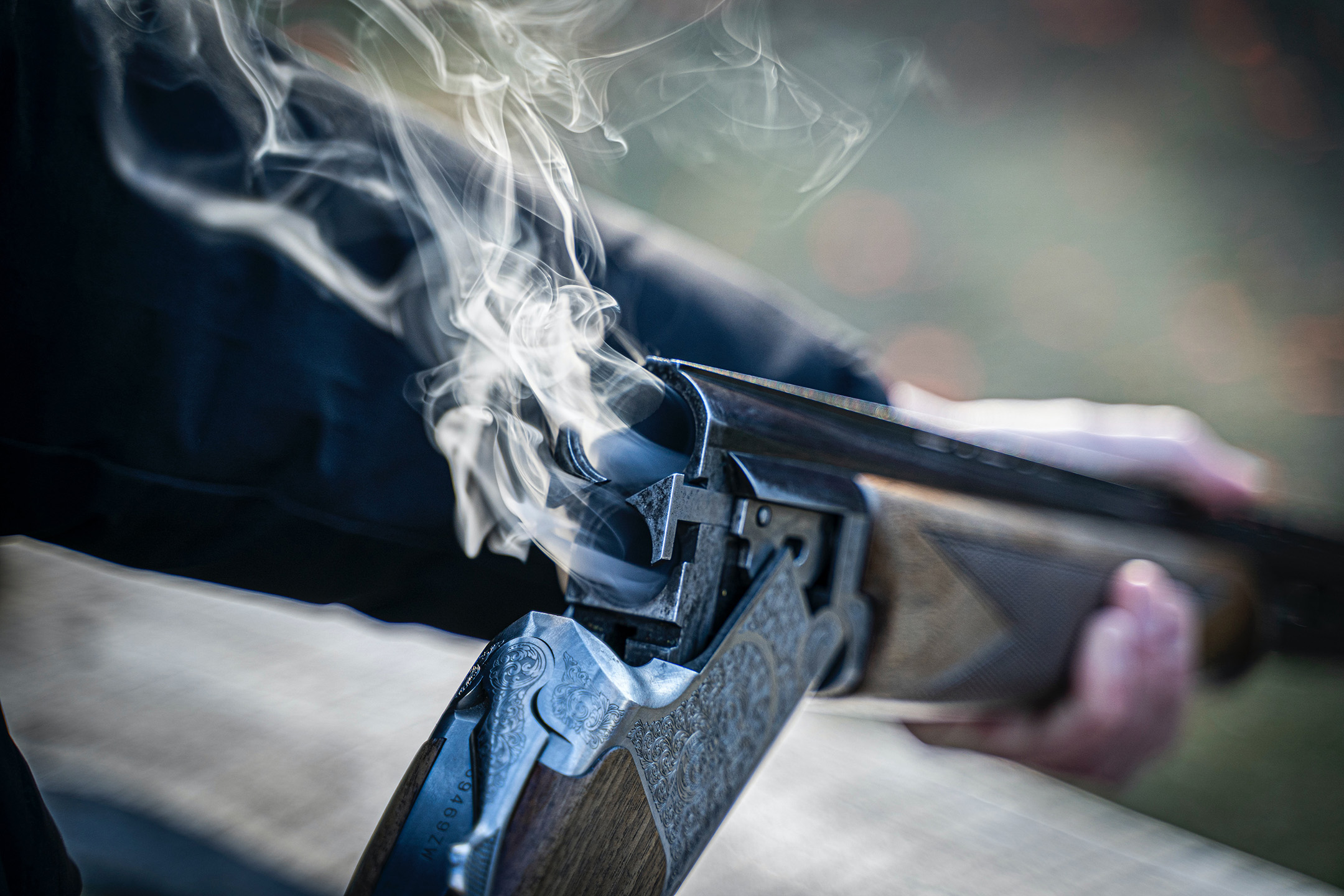
The gauge of a shotgun refers to the diameter of the barrel. It’s a measure of how many lead balls of the barrel’s size equal a pound. Yes, it’s an asinine way to measure something. But it’s what we’ve got. Thus, a smaller number equals a bigger barrel.
Most hunters will choose between a 12-gauge and 20-gauge, with other, less common sizes being 16-gauge, 28-gauge, and .410-caliber, the latter of which is actually a measurement related to rifle size and very small.
A 12-gauge is the do-it-all, most common option. It will do everything you’ll ask of it, whether it’s waterfowl, upland, turkey, or deer hunting. If you can only have one, a 12 should be it. The only downside is that the gun will be heavier and kick more than other options. For that reason, you’ll see many new hunters, youth, and women shoot a 20.
Twenty gauges are very popular in upland hunting circles due to the lightweight nature of the gun and the relative delicacy of the game they’re chasing. You don’t need a booming 12 with 3.5 shells to take out a grouse in thick cover.
While they can also serve as a good turkey and waterfowl gun, a 20-gauge shouldn’t be the first choice for those applications. But, if you’re looking for less kick and weight while maintaining versatility, a 20 is a great bet. And for experienced shooters, a 20 is arguably the best there is.
Our team does need to note the love for the 16-gauge, and the Browning Sweet 16 in particular. Usually, a middle-of-the-road approach leads to a product that isn’t good at anything. That isn’t the case with a 16-gauge. Maybe it’s the rarity of it, but we feel a 16 is absolutely perfect for everything. Yes, the ammo is limited, and you’ll probably have to start reloading. But dang, it’s a good gun to own. Plus, you look refined carrying a 16, and the value is going to stay up there.
Action
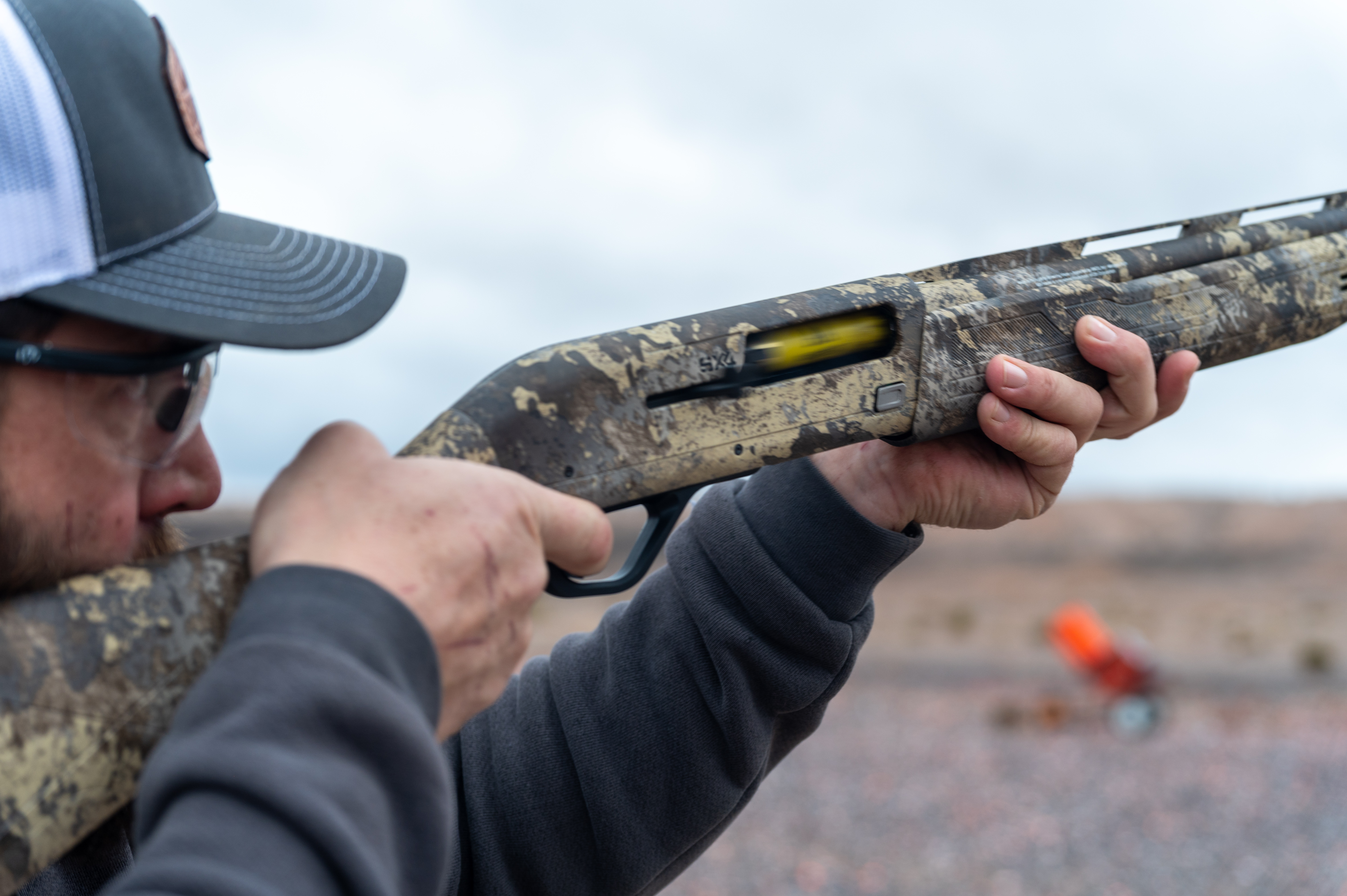
The action refers to how the gun cycles between shots. Common actions are semiautomatic, pump-action, and break-action.
Semi Autos
Semi-autos use either the inertia of the shot recoil or gases created during firing to cycle a new shell into the chamber. As a very general statement, a gas-operated gun will kick less, but experience more cycling issues. An inertia gun will kick more, but reliably cycle. But even that requires an asterisk.
If you’re target shooting with light loads, opt for a gas-driven gun. It will effectively use the gas to cycle between rounds. A light load in an inertia gun, on the other hand, may not give enough kick to cycle effectively. But both work well in either situation. The skinny is, if you’re hunting, go inertia; if you’re target shooting, go gas, even though both can work in either situation.
Pump Action
A pump action is exactly what it sounds like. Hunters use a mechanism called a “pump” to eject the spent shell and insert a new one. The big draws to pump-action guns are that they’re priced affordably and are very reliable.
While it takes longer to cycle between shots, some hunters actually prefer that. The action of pumping requires you to slow down and re-acquire a good sight picture on your target rather than wildly slinging lead or steel down range with a semi-auto.
Break Action
Break-action shotguns work by opening the gun with a lever, exposing the back end of the barrels where the shooter loads shells. When you close it back up, two barrels fire in succession as the trigger is pulled, much like a semi-auto.
There are two types of break-action guns: an over-under and the less common side-by-side. The names are indicative of the orientation of the two barrels.
There are also differences in how shells are expelled from a break-action gun. When you open the gun after firing, it will either use an ejection system to shoot out the spent shells (an ejector) or the hunter has to pull the spent shells out by hand (an extractor). An ejector allows for a faster reload, but it can make finding spent shells more difficult.
One of the most significant benefits of a break-action is the ability to use two separate chokes on the same gun. You can stick a more open choke in the first to fire barrel and a tighter choke in the second barrel for longer shots as the target or game moves away from you.
If you’re walking a long way with a shotgun, break-action guns also offer a wider variety of carrying options, and are an absolute pleasure to carry in the field. Just remember, you’re realistically limited to two shots.
Choke
The choke of a shotgun is a restriction in the last portion of the barrel that helps control the way pellets disperse into a “pattern.” Common chokes, from most open to tightest, are improved cylinder, modified, and full.
There are many other choke variants, but in short, hunters use open chokes like improved cylinders when they expect close shots and want the pellets to spread quickly. Full choke keeps the pattern tight for longer shots. Modified falls in the middle.
Many modern shotguns use interchangeable chokes that you can change easily even in the field. These enhance the versatility of the shotgun. Most new hunters or shooters should buy a shotgun with interchangeable chokes if possible.
Shotguns for Different Hunting Applications
Now that you understand some of the differences in shotguns, it’s time to put that knowledge to real-world use. Below are recommendations for different hunting applications. However, you need to understand that these recommendations are generalizations. You can use just about any shotgun for any type of hunting. That’s what makes them so awesome.
Upland
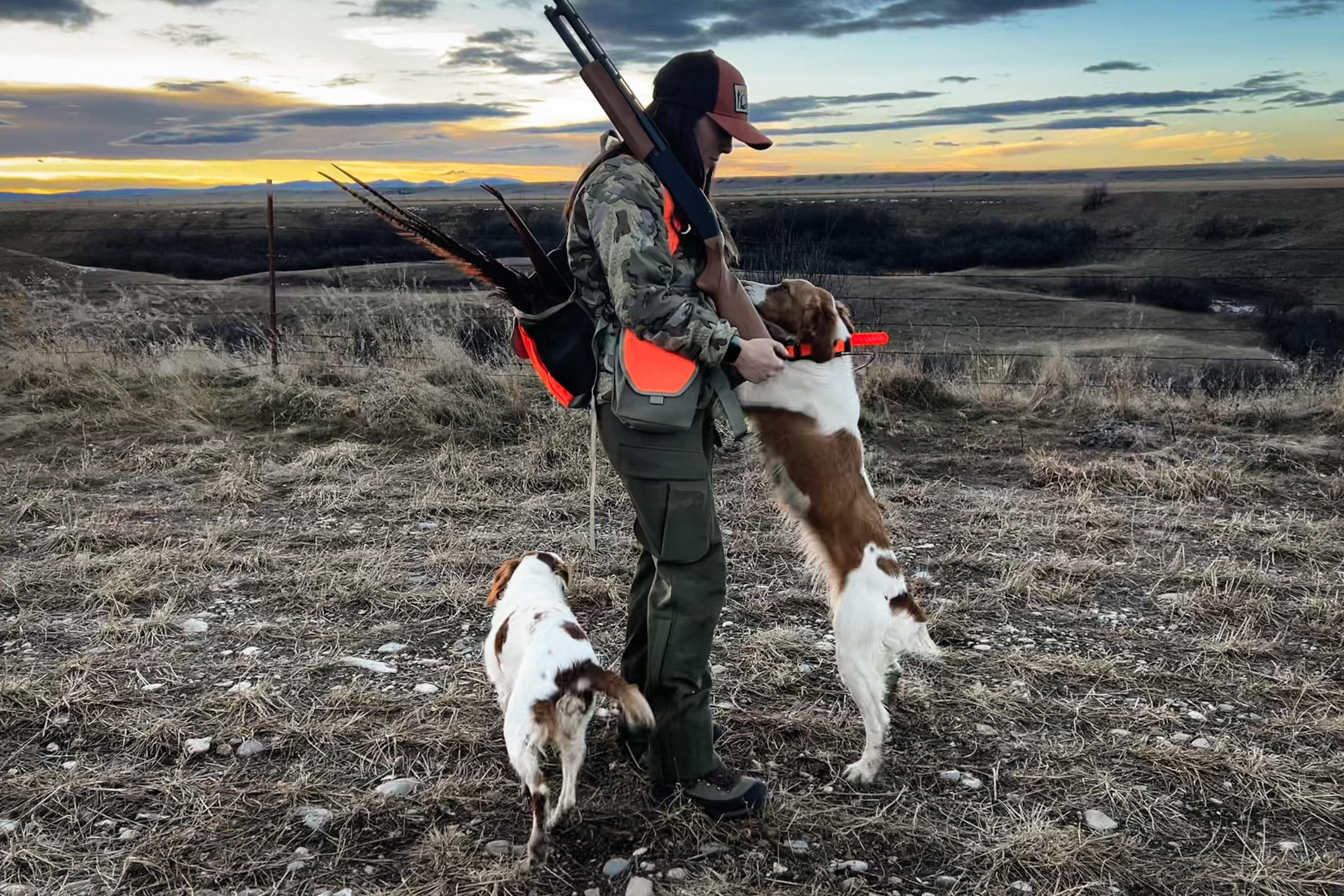
Upland hunters have different needs than other shotgun users due to the amount of ground they cover in a day in the field. Weight savings and comfort in carry become some of the most important features of a gun.
Since most upland game birds aren’t hardy, a 20-gauge like the Browning Citori is a very popular choice. The overall weight of the gun is lighter, and there isn’t a need for the extra punch a 12 offers. However, 12-gauges are still popular (especially with pheasant hunters), and can absolutely be used for upland hunting.
Break-action guns are the classic guns for upland hunters. The main reason is the diverse carry options a break-action provides. It can be broken apart and slung over your shoulder, which makes it feel like you aren’t even carrying a gun. You can also sling it over a forearm, or carry it closed just like you would a semi-auto.
However, there is one situation where a semi-auto may be the better choice. Most upland regulations do not have a shell limit, and many chukar hunters love having five rounds. The amount of work to find birds is unmatched, the shots can be hard on steep slopes, and the birds covey well. Having the extra shots is well worth it.
Waterfowl
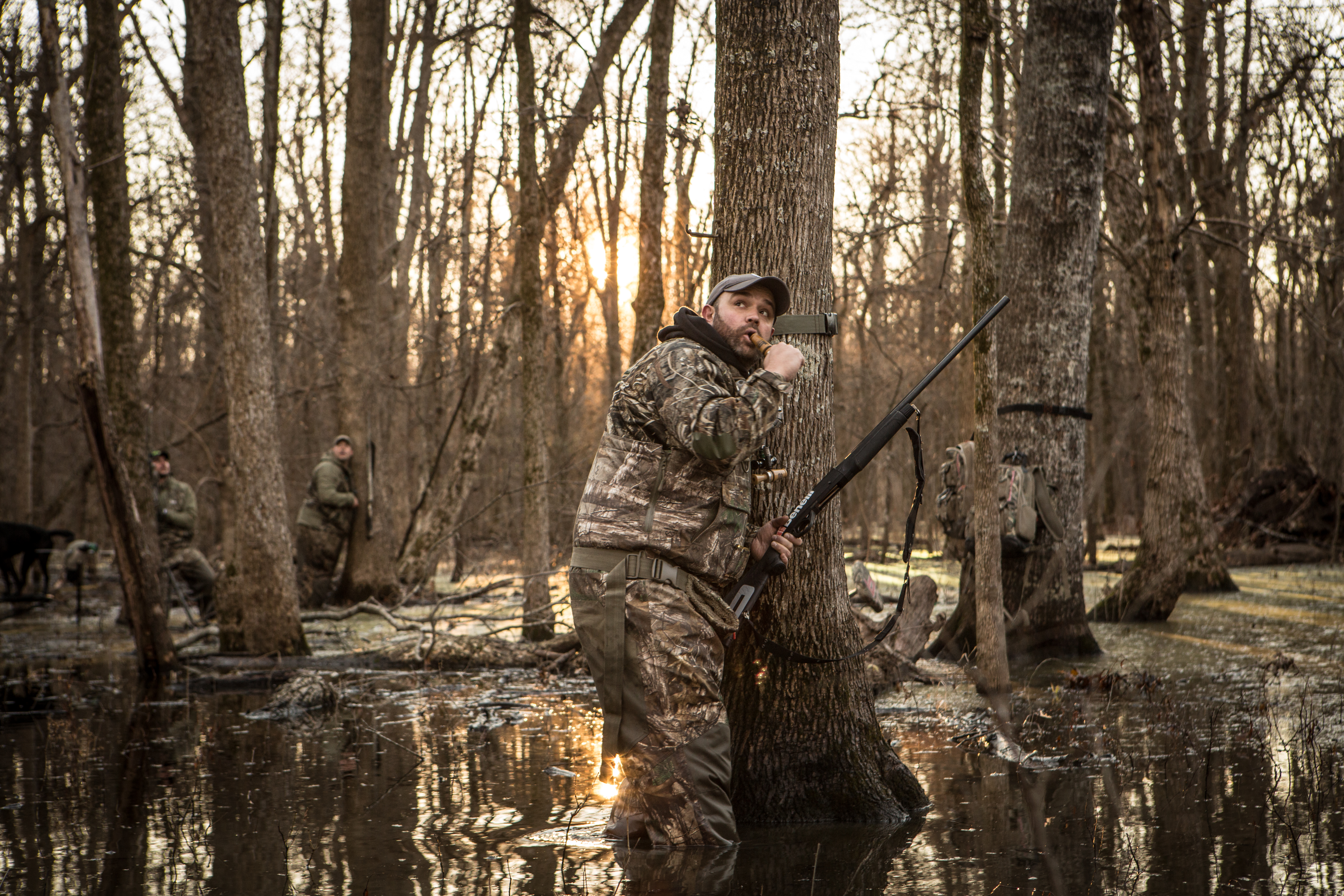
If waterfowl is your primary target, lean toward a 12-gauge. A 12 will have plenty of power to knock down big mallards at a distance and is the gauge to use for larger birds like geese.
It’s hard to know for sure, but either a pump action or a semi-auto is the most popular action for a waterfowl gun. Both will allow you the maximum three shells allowed for waterfowling.
A pump, like the Remington 870, gets the nod for affordability. A semi-auto, like the Benelli Super Black Eagle, gets the nod in functionality. It’s nice only to have to pull the trigger when mallards are raining into your spread.
Waterfowlers should also consider the finish on their shotgun. You’ll be dragging the gun through mucky swamps and often getting it wet. Those conditions can quickly rust a shotgun. That’s especially true if you plan on hunting saltwater. GearJunkie contributor Morgan Nowels has hunted ducks on the Great Salt Lake, and every morning his shotgun would develop rust spots within a few hours.
Most of the guns on this list come in a variety of finishes. A cerakoted gun will be more expensive than the standard version, but its worth the investment for waterfowlers.
Turkey
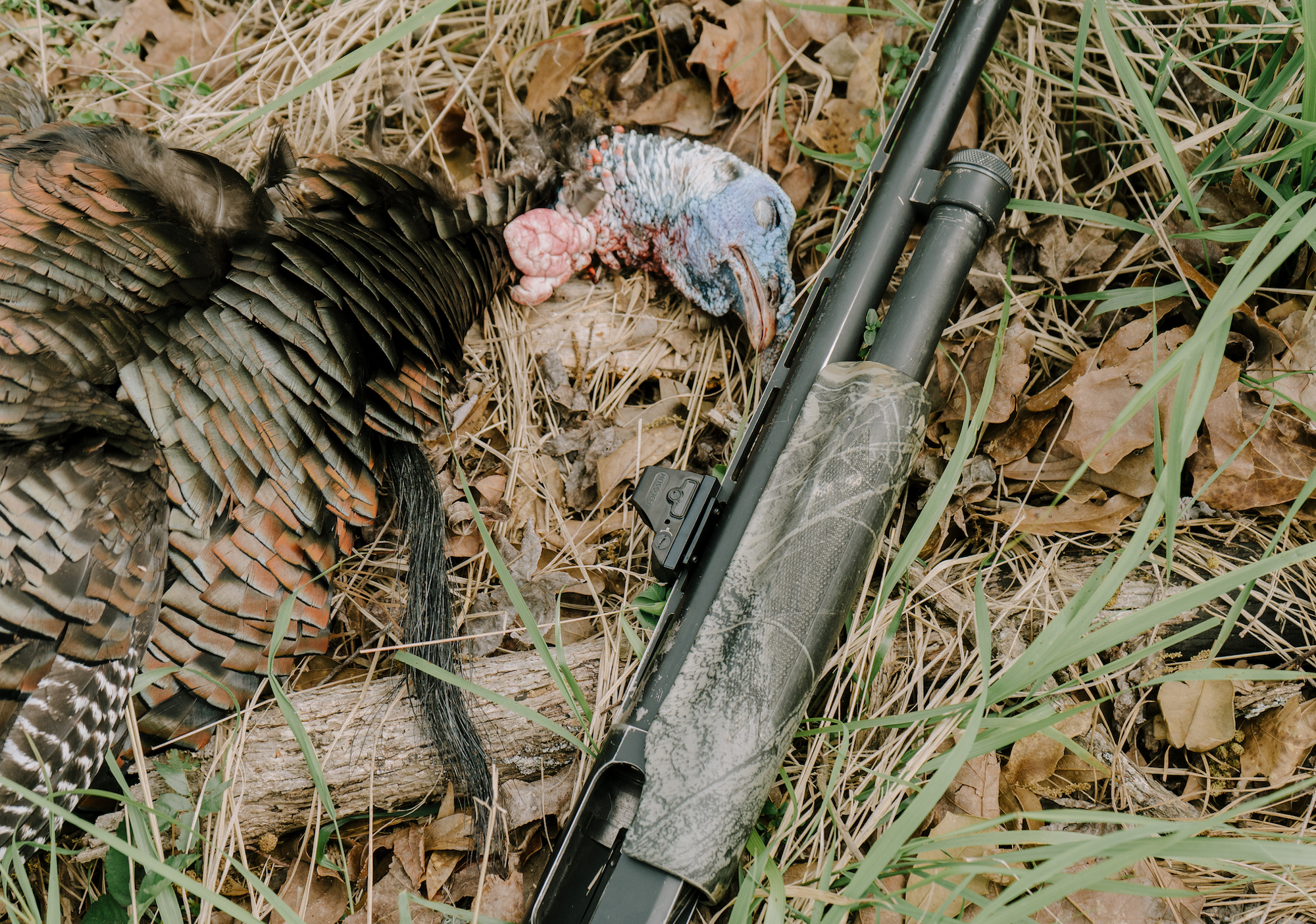
Many people use their standard 12-gauge for turkey hunting, and there isn’t any reason the gun you have won’t work. But for those who religiously chase springtime gobbles, a dedicated turkey shotgun is awesome. And if that sounds like you, check out our Best Turkey Vests buyer’s guide.
A gun like the Franchi Affinity 3 Turkey offers a pistol grip that excels at accuracy while shooting from a seated position, an actual sight rather than a simple bead, and a camo finish. It comes standard with chokes designed for turkey hunting.
This type of gun is a bit of a one-trick pony, but it would also excel at deer hunting. However, even if you don’t spring for a dedicated turkey shotgun, you should opt for one with a camo finish if you plan on chasing long beards.
Final Thoughts
Of course, shotguns are complex tools. Many books have been written about them, so I’m leaving out a lot of details. Things like stock material (wood versus synthetic) and length of pull have a huge effect on the way a gun performs and feels. But if you’re getting a shotgun, you have a lifetime to learn about the nuances of the tool.
For now, you should be on your way to making a reasonably informed decision. Good luck — and happy hunting.
Read the full article here



